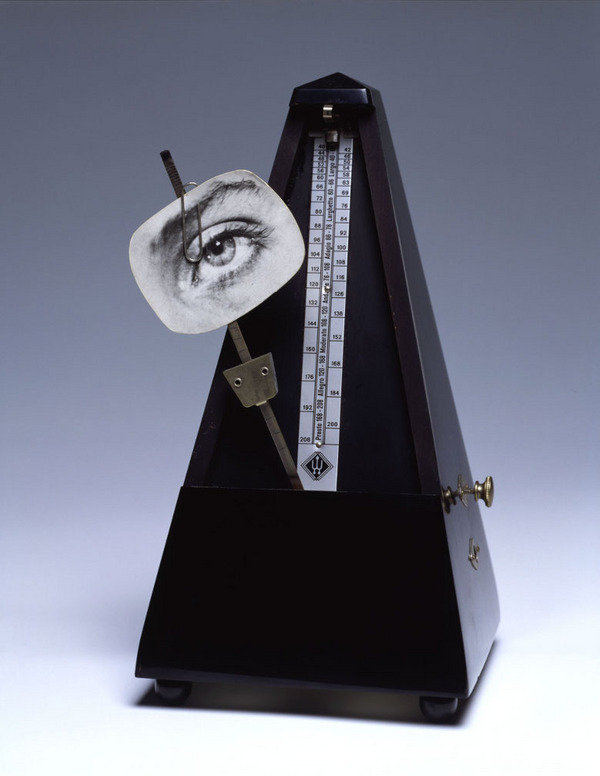Marvelous Objects
dal 29/10/2015 al 14/2/2016
Segnalato da
Marcel Duchamp
Hans Arp
Alberto Giacometti
Man Ray
David Smith
Henry Moore
Alexander Calder
Salvador Dali'
Isamu Noguchi
Joan Miro'
Hans Bellmer
Ruth Bernhard
Valerie Fletcher
29/10/2015
Marvelous Objects
Hirshhorn Museum and Sculpture Garden, Washington
Surrealist Sculpture from Paris to New York. A comprehensive view of the movement's three-dimensional works, it brings together more than 120 oevres created by more than 20 artists from the 1920s to the 1950s. The exhibition presents a number of drawings, paintings and photographs.

“Marvelous Objects: Surrealist Sculpture from Paris to New York,” the first major museum exhibition devoted to a comprehensive view of the movement’s three-dimensional works, opens Oct. 29 at the Smithsonian’s Hirshhorn Museum and Sculpture Garden. The exhibition brings together more than 120 works created by more than 20 artists from France, Spain, Belgium, Switzerland, Germany, Great Britain and the United States from the 1920s to the 1950s. Works include sculptures, photographs, drawings and paintings.
“Surrealism has long been seen as a movement in painting, drawing and film,” said Melissa Chiu, director of the Hirshhorn. “This exhibition reveals the great breadth and depth of the sculptural work, a vital part of surrealism that continues to be relevant to today’s artists.”
“This exhibition surveys the totality of surrealist sculpture by highlighting two main approaches,” said Valerie Fletcher, senior curator and the project’s organizer. “Organic abstraction originated in the whimsical reliefs of Jean Arp and inspired many artists, including Henry Moore in Britain, Joan Miró in Spain and Isamu Noguchi in the United States. Found-object assemblages, which originated in Marcel Duchamp’s Assisted Readymades, became a surrealist passion. ‘Marvelous Objects’ also unifies into a single narrative the international development of surrealism in Europe and the United States.”
Among the 85 sculptures in the exhibition are Arp’s “Shirt Front and Fork” (1922), Duchamp’s “Why Not Sneeze, Rose Sélavy?” (1921), Alberto Giacometti’s “Woman with Her Throat Cut” (1932) and “The Invisible Object (Hands Holding the Void)” (1935), Man Ray’s “Object to be Destroyed” (1933), Salvador Dalí’s “Venus de Milo with Drawers” (1936) and “Lobster Telephone” (1938), Moore’s “Stringed Figure No. 1” (1937), Miró’s “Lunar Bird” (1945) and David Smith’s “Saw Head” (1933) and “Chain Head” (1933).
In addition to the sculptural works, the exhibition presents a number of drawings, paintings and photographs that substantiate the surrealists’ interest in working in three dimensions. These range from photographs of disturbingly posed dolls by Hans Bellmer and Ruth Bernhard to images of bizarrely dressed mannequins in the surrealists’ 1938 exhibition in Paris. Cases of archival material document how images of surrealist sculpture circulated among artists via books and periodicals.
As the center of artistic activity shifted from Paris to New York, American sculptors infused surrealism with new life. “Marvelous Objects” features a gallery of Joseph Cornell’s magical box constructions; another gallery dramatically displays Noguchi’s dark organic visions from the 1940s. The exhibition ends with sculptures from the 1930s to the early 1950s that transition from surrealism to postwar metal constructions, such as Alexander Calder’s “Devil Fish” (1937) and “The Spider” (1940) and Smith’s “Ancient Household” (1945) and “Agricola I” (1951–52).
The exhibition is accompanied by a full-color catalog with a comprehensive essay and chronology by Fletcher, as well as several historical texts. “Shana Lutker, Le ‘NEW’ Monocle, Chapters 1–3,” a separate exhibition of the work of a contemporary artist whose sculptural installations draw upon altercations by contentious surrealists, runs concurrently.
Leading support for “Marvelous Objects: Surrealist Sculpture from Paris to New York” has been provided by the Jerome L. Greene Foundation, with major funding from the Terra Foundation for American Art and lead corporate sponsor Altria Group. Additional support has been provided by the Swiss Arts Council Pro Helvetia, Barbara and Aaron Levine, Robert Mnuchin and the Smithsonian Institution’s Scholarly Studies Program.
Image: Man Ray, Object to Be Destroyed (Indestructible Object), 1932, edition 1965
Smithsonian American Art Museum. Gift of Samuel M. Greenbaum and Helen Mark families in memory of Helen Mark Greenbaum © Man Ray Trust / Artists Rights Society (ARS), NY / ADAGP, Paris 2015
Press contact:
Kelly Carnes (202) 633-2825; carnesk@si.edu
Hirshhorn Museum and Sculpture Garden
Independence Avenue at Seventh Street SW Washington, D.C. 20560
Hours: Monday–Sunday 10am–5:30pm



